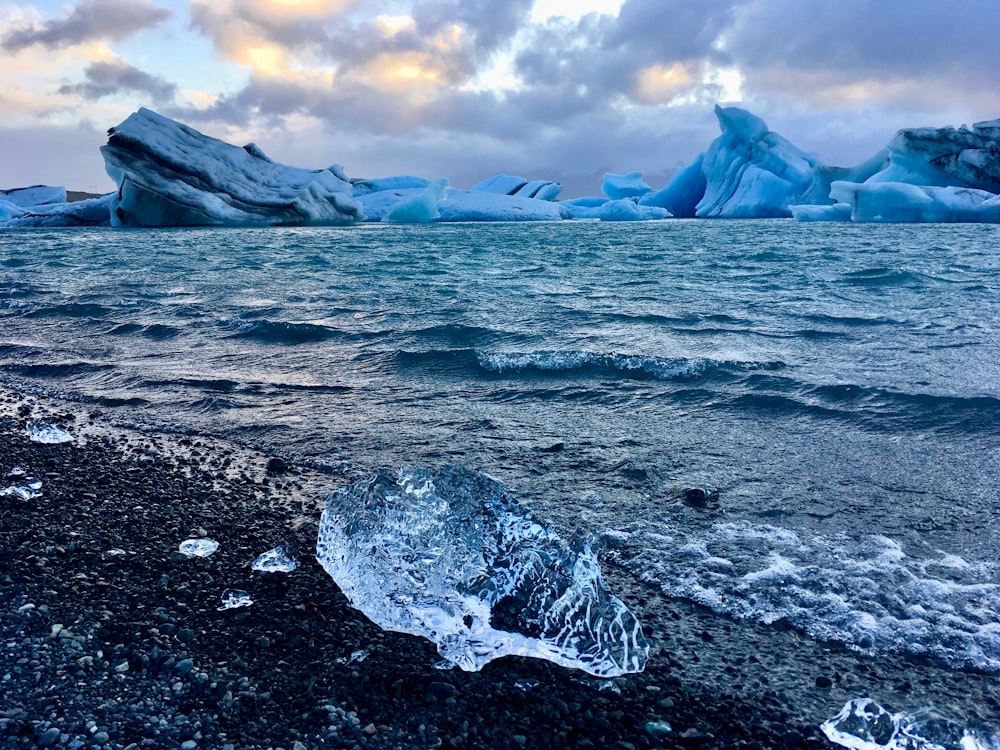Dạng câu hỏi này không kiểm tra bạn trên việc bạn có thể hiểu chi tiết được bài đọc. Nhiều sĩ tử thi IELTS tốn nhiều thời gian để đọc cả bài đọc và cố để có thể hiểu được từng từ trong bài, thì điều này thực sự không cần thiết. Bạn hãy tập trung nhiều hơn vào bảng tóm tắt nội dung bài đọc. Trong bài viết này, hãy cùng tìm hiểu một số bí quyết và ví dụ của dạng câu hỏi trên nhé!
1) Bí kíp chinh phục Summary Completion questions:
- Hãy dự đoán trước câu trả lời trước khi bạn nhìn vào các options hoặc tìm kiếm trong bài đọc. Việc này sẽ giúp cho các bạn dễ tìm được đáp án chính xác hơn và tránh các bẫy trên
- Xác định rõ dạng từ cần điền: từ đó sẽ là động từ, danh từ, tính từ hay trạng từ ? Như mình đã đề cập ở trên, nếu bạn điền đúng từ nhưng sai về mặt ngữ pháp thì vẫn sẽ tính như một đáp án sai
- Tìm kiếm các Synonyms và Paraphrases trong bài đọc hơn là tìm những từ bạn có thể trực tiếp thấy giống nhau trong bài đọc
- KHông dành thời gian quá nhiều để tìm kiếm câu trả lời cho một câu hỏi nào. Nếu bạn không tìm thấy câu trả lời trong một thời gian tương đối, hãy khoanh nó lại, tích vào đáp án bạn nghĩ có khả năng đúng nhất và chuyển sang làm câu khác. Tập trung vào câu hỏi dễ sẽ là chiến lược sử dụng thời gian làm bài tốt hơn
2) Ví dụ dạng câu hỏi Summary Completion questions:
Climate Change and the Inuit
The threat posed by climate change in the Arctic and the problems faced by Canada’s Inuit people
A
Unusual incidents are being reported across the Arctic. Inuit families going off on snowmobiles to prepare their summer hunting camps have found themselves cut off from home by a sea of mud, following early thaws. There are reports of igloos losing their insulating properties as the snow drips and refreezes, of lakes draining into the sea as permafrost melts, and sea ice breaking up earlier than usual, carrying seals beyond the reach of hunters. Climate change may still be a rather abstract idea to most of us, but in the Arctic it is already having dramatic effects – if summertime ice continues to shrink at its present rate, the Arctic Ocean could soon become virtually ice-free in summer. The knock-on effects are likely to include more warming, cloudier skies, increased precipitation and higher sea levels. Scientists are increasingly keen to find out what’s going on because they consider the Arctic the ‘canary in the mine’ for global warming – a warning of what’s in store for the rest of the world
B
For the Inuit the problem is urgent. They live in precarious balance with one of the toughest environments on earth. Climate change, whatever its causes, its direct threat to their way of life. Nobody knows the Arctic as well as the locals, which is why they are not content simply to stand back and let outside experts tell them what’s happening. In Canada, where the Inuit people are jealously guarding their hard-won autonomy in the country’s newest territory, Nunavut; they believe their best hope of survival in this changing environment lies in combining their ancestral knowledge with the best of modern science. This is a challenge in itself
C
The Canadian Arctic is a vast, treeless polar desert that’s covered with snow for most of the year. Venture into this terrain and you get some idea of the hardships facing anyone who calls this home. Farming is out of the question and nature offers meagre pickings. Humans first settled in the Arctic a mere 4,500 years ago, surviving by exploiting sea mammals and fish. The environment tested them to the limits: sometimes the colonists were successful, sometimes they failed and vanished. But around a thousand years ago, one group emerged that was uniquely well adapted to cope with the Arctic environment. These Thule people moved in from Alaska, bringing kayaks, sledges, dogs, pottery and iron tools. They are the ancestors of today’s Inuit people
D
Life for the descendants of the Thule people is still harsh. Nunavut is 1.9 million square kilometres of rock and ice, and a handful of islands around the North Pole. It’s currently home to 2,500 people, all but a handful of the indigenous Inuit. Over the past 40 years, most have abandoned their nomadic ways and settled in the territory's 28 isolated communities, but they still rely heavily on nature to provide food and clothing. Provisions available in local shops have to be flown into Nunavut on one of the most costly air networks in the world, or brought by supply ship during the few ice-free weeks of summer. It would cost a family around £7,000 a year to replace meat they obtained themselves through hunting with imported meat. Economic opportunities are scarce, and for many people, state benefits ate their only income
E
While the Inuit may not actually starve if hunting and trapping are curtailed by climate change, there has certainly been an impact on people’s health. Obesity, heart disease and diabetes are beginning to appear in a people for whom these have never before been problems. There has been a crisis of identity as the traditional skills of hunting, trapping and preparing skins have begun to disappear. In Nuvavut’s igloo and email’ society, where adults who were born in igloos have children who may never have been out on the land, there’s a high incidence of depression
F
With so much at stake, the Inuit are determined to play a key role in teasing out the mysteries of climate change in the Arctic. Having survived there for centuries, they believe their wealth of traditional knowledge is vital to the task. And the Western scientists are starting to draw on this wisdom, increasingly referred to as ‘Inuit Qaujimajatuqangit’, or IQ. ‘In the early days, scientists ignored us when they came up here to study anything. They just figured these people don’t know very much so we won’t ask them’ says John Amagoalik, an Inuit leader and politician. ‘But in recent years IQ has had much more credibility and weight.’ In fact, it is now a requirement for anyone hoping to get permission to do research that they consult the communities, who are helping to set the research agenda to reflect their most important concerns. They can turn down applications from scientists they believe will work against their interests, or research projects that will impinge too much on their daily lives and traditional activities
G
Some scientists doubt the value of traditional knowledge because the occupation of the Arctic doesn’t go back far enough. Other, however, point out that the first weather stations in the far north date back just 50 years. There are still huge gaps in our environmental knowledge, and despite the scientific onslaught, many predictions are mo more than best guesses. I could help to bridge the gap and resolve the tremendous uncertainly about how much of what we’re seeing is natural capriciousness and how much is the consequence of human activity
Nguồn: Cambridge IELTS 6
Questions 1-8
Complete the summary of paragraphs C and D below
Choose NO MORE THAN TWO WORDS from paragraphs C and D for each answer
Write your answers in boxes 1-8 on your answer sheet
If you visit the Canadian Arctic, you immediately appreciate the problems faced by people for whom this is home. It would clearly be impossible for the people to engage in 1………………………………….. as a means of supporting themselves. For thousands of years they have had to rely on catching 2………………………………….. and 3 ………………………………….. as a means of sustenance. The harsh surroundings saw many who tried to settle there pushed to their limits, although some were successful. The 4 …………………………………..people were an example of the latter and for them, the environment did not prove unmanageable. For the present inhabitants, life continues to be a struggle. The territory of Nunavut consists of little more than ice, rock and a few 5 …………………………………… In recent years, many of them have been obliged to give up their 6 …………………………………..lifestyle, but they continue to depend mainly on 7 ………………………………….. for their food and clothes 8 ………………………………….. produce is particularly expensive
ĐÁP ÁN
1 Farming
2 fish
3 sea mammals
4 Thule
5 islands
6 nomadic
7 nature
8 Imported
CHÚ THÍCH
1 Bạn có thể tìm được đáp án trong câu: ‘’ Venture into this terrain and you get some idea of the hardships facing anyone who calls this home. Farming is out of the question and nature offers meagre pickings.’’
2 & 3 . Bạn có thể tìm được đáp án trong câu: ‘’ Humans first settled in the Arctic a mere 4,500 years ago, surviving by exploiting sea mammals and fish’’
4 Bạn có thể tìm được đáp án trong câu:’’ one group emerged that was uniquely well adapted to cope with the Arctic environment. These Thule people moved in from Alaska, bringing kayaks, sledges, dogs, pottery and iron tools’’
5 Bạn có thể tìm được đáp án trong câu:’’ Life for the descendants of the Thule people is still harsh. Nunavut is 1.9 million square kilometres of rock and ice, and a handful of islands around the North Pole.’’
6 Bạn có thể tìm được đáp án trong câu:’’ Over the past 40 years, most have abandoned their nomadic ways’’
7 Bạn có thể tìm được đáp án trong câu: ‘’ but they still rely heavily on nature to provide food and clothing.’’
8 Bạn có thể tìm được đáp án trong câu: ‘’ . It would cost a family around £7,000 a year to replace meat they obtained themselves through hunting with imported meat’’










